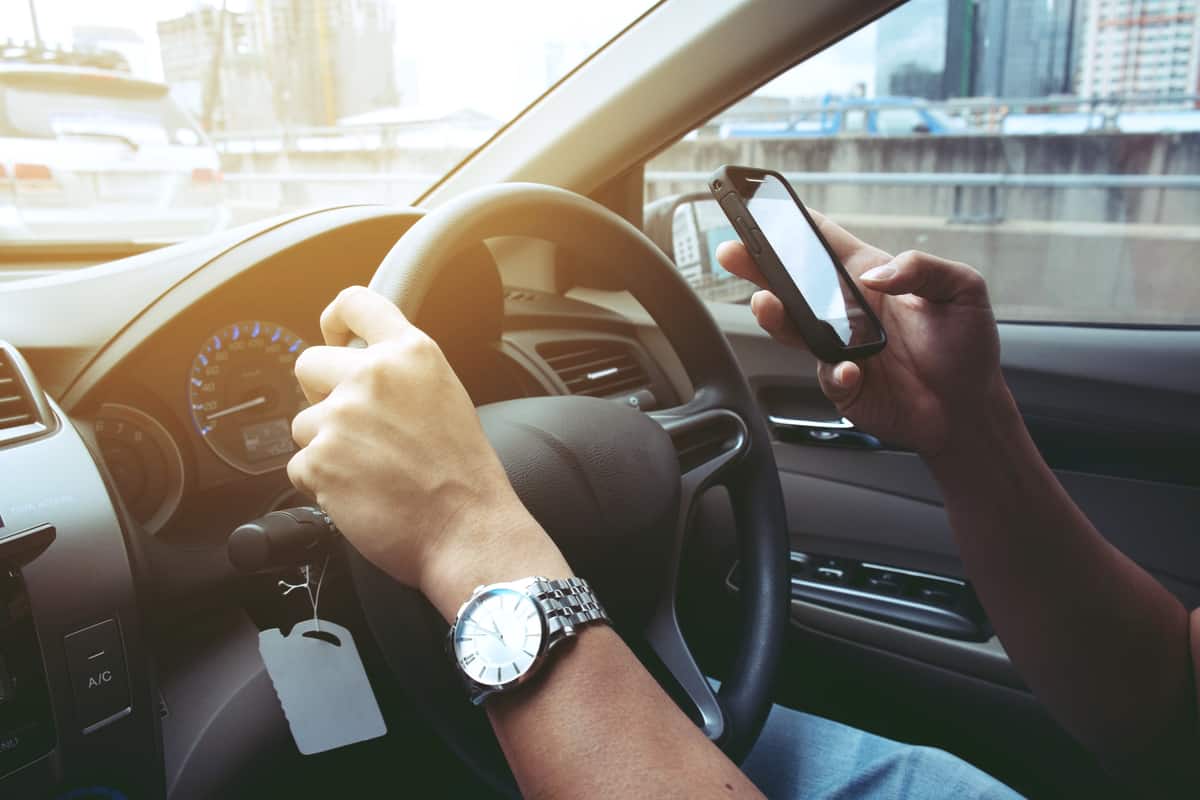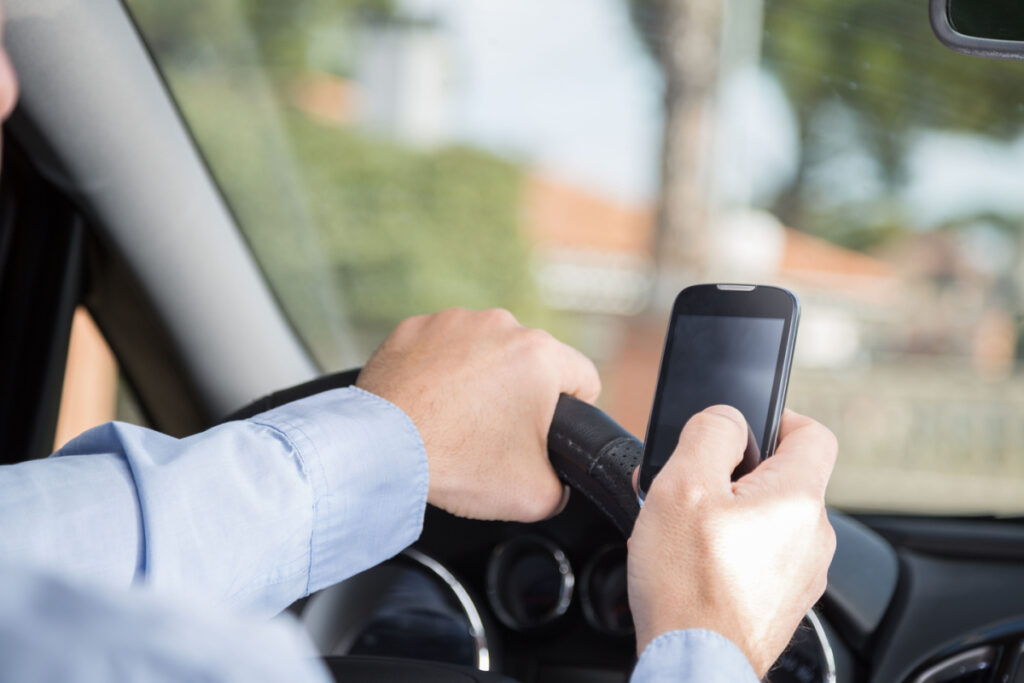
Partner at Charbonnet Law Firm LLC
Practice Areas: Car Accident, Slip-and-Fall, Work-related Injury

Staying focused on the road is something most drivers assume they’re already doing, yet distraction is one of the leading factors behind avoidable crashes in the United States. A brief glance at a screen, a moment of daydreaming, or reaching for something inside the car can interrupt essential awareness faster than many people realize.
These small lapses reduce reaction time, slow decision-making, and create conditions where simple errors turn into serious accidents.
Understanding what counts as distracted driving, how it happens, and why it’s so dangerous helps drivers make safer choices every day. And while this article aims to educate and inform, some readers dealing with a recent collision may eventually want to speak with a New Orleans car accident attorney for guidance based on their circumstances.
Driving is a task that demands full attention. When anything pulls your eyes, hands, or mind away from what’s happening on the road, the risk of a crash rises immediately.
Distracted driving covers more than texting or checking a phone. National and state safety agencies explain it as any activity that interferes with visual, manual, or cognitive attention. Even brief lapses can create hazards during normal traffic flow.
Visual distractions take your eyes off the road. Common examples include checking notifications, reading messages, looking at a GPS, or searching for something inside the car.
Manual distractions involve removing a hand from the wheel. This includes eating, adjusting controls, reaching for dropped items, or handling objects inside the vehicle.
Cognitive distractions pull your mind away from driving. Examples include daydreaming, emotional stress, conversations with passengers, loud music, or thinking about something unrelated to driving.
Some activities fall into more than one category. Texting affects all three, making it one of the most dangerous behaviors on the road.
Most distractions feel small in the moment but become significant risks when combined with traffic, speed, or poor road conditions.
Everyday examples include:
Other distractions often overlooked include looking at billboards, adjusting climate controls, talking with passengers, handling pets, or reacting to something happening outside the vehicle.
Even short periods of inattention can reduce reaction time and increase the likelihood of a mistake.

National and state data show how widespread the issue is. The numbers highlight the real risks associated with losing focus while driving. According to the National Highway Traffic Safety Administration, distracted driving contributes to thousands of fatalities and hundreds of thousands of injuries each year in the United States.
Louisiana law prohibits texting while driving under Louisiana Revised Statute 32:300.5, reflecting the state’s efforts to reduce distraction-related crashes.
Young drivers face added risk due to inexperience combined with frequent phone use. Studies show that drivers aged 15 to 19 account for a notable portion of distraction-related crashes nationwide.
These findings show why awareness and prevention matter. Even small moments of distraction can quickly lead to a dangerous situation.
Driving safely relies on constant awareness. When attention shifts, even for a moment, the ability to notice hazards drops.
This affects:
These issues make distracted driving one of the most preventable hazards on the road.
Simple habits can significantly reduce risk. Before starting the car, secure items, set navigation, and silence unnecessary notifications. If a message or call requires attention, pull over safely before checking it.
Longer trips increase the chance of mental fatigue. Taking short breaks to stretch or rest helps maintain focus. Parents can also set clear expectations and model safe driving behaviors for teen drivers.
Another helpful step is keeping conversations calm and avoiding emotionally charged discussions in the car. Even a basic disagreement can become a cognitive distraction.
If you were involved in a crash where distraction may have played a role and need trusted guidance, you can contact our New Orleans personal injury lawyer for help understanding your options and what steps to consider next.
| Type of Distraction |
Description |
Common Examples |
| Visual | Takes eyes off the road | Looking at a phone, reading messages, searching for items |
| Manual | Takes hands off the wheel | Eating, adjusting controls, reaching for objects |
| Cognitive | Takes mind off driving | Daydreaming, stress, talking to passengers |
After any crash, health and safety come first. Seek medical care immediately, even if injuries seem minor. Some conditions take time to show symptoms.
If you can do so safely, document the scene with photos and notes. Capture vehicle positions, surroundings, and anything that may help explain what happened. Eyewitness information can also be helpful when trying to understand the cause of the accident.
Keep medical records, bills, and notes about how injuries affect your daily routine. This documentation helps create a clear picture of what occurred.
Understanding distracted driving and its risks can help drivers stay alert and avoid common hazards on the road.
Anything that diverts your eyes, hands, or mind from operating the vehicle, including phones, eating, reaching for items, or daydreaming.
Texting involves visual, manual, and cognitive distraction at the same time, making it one of the highest-risk behaviors behind the wheel.
They reduce manual distraction but still involve mental distraction, so drivers should limit any phone use while driving.
Teen drivers experience higher distraction-related crash rates due to inexperience, passengers, and frequent phone use.
Camera footage, witness accounts, roadway behavior, and other observations can indicate distraction before a crash.
Plan breaks, secure belongings, set navigation beforehand, and silence non-essential notifications to maintain focus.
Distracted driving remains a leading cause of preventable accidents, and awareness is one of the strongest tools for reducing risk. By understanding the different types of distractions, reviewing real safety data, and adopting practical prevention habits, drivers can stay more alert and protect themselves and others on the road.
If you were involved in an accident and believe distraction played a role, the legal team at Charbonnet Law Firm can help you understand your options. Reach out for a free consultation to discuss your situation and learn more about the steps you can take moving forward.

With over 50 years of legal experience serving families in the New Orleans area and surrounding Louisiana communities, our firm takes pride in providing clients with personalized legal services tailored to individual needs.